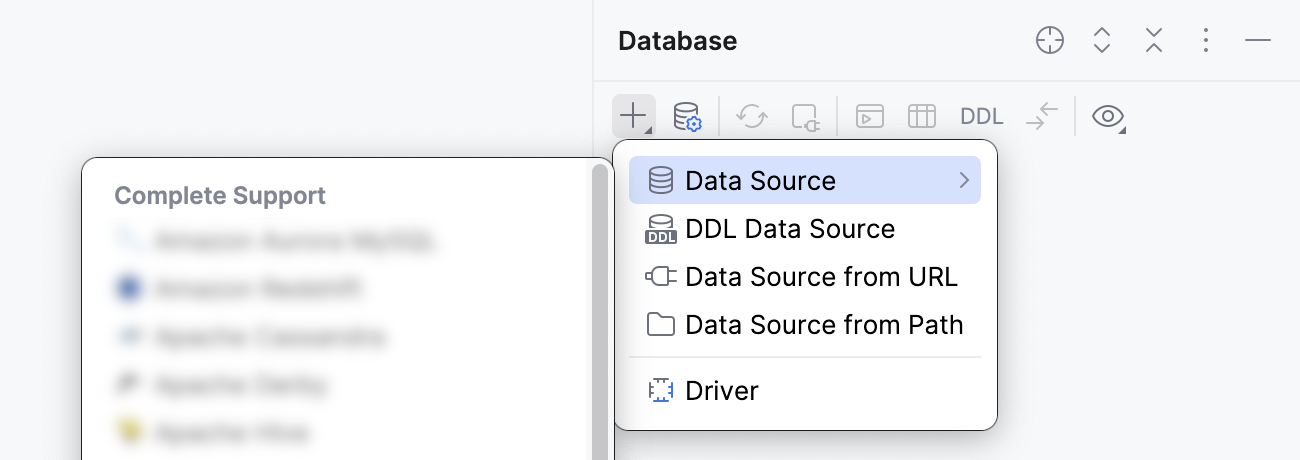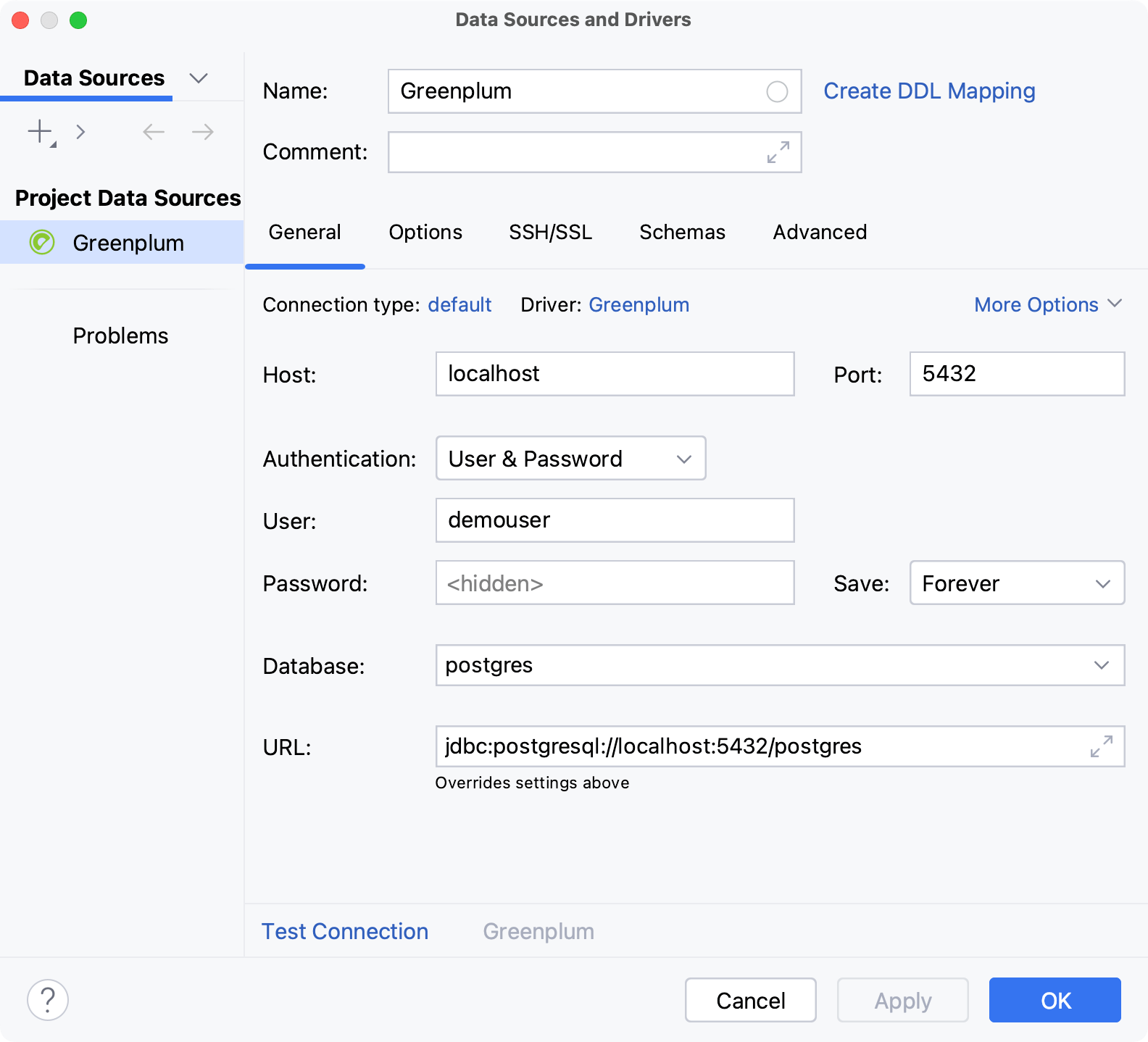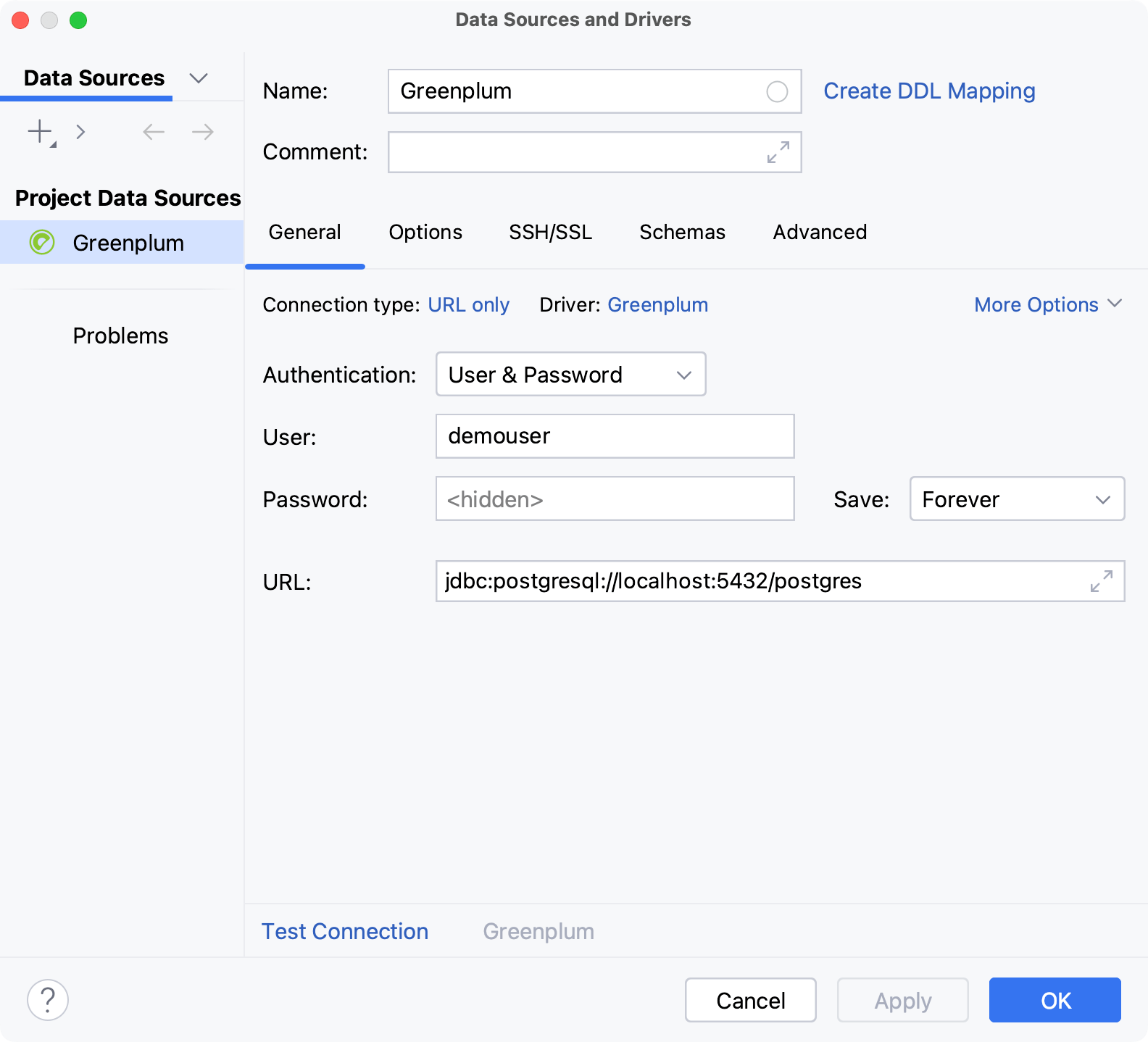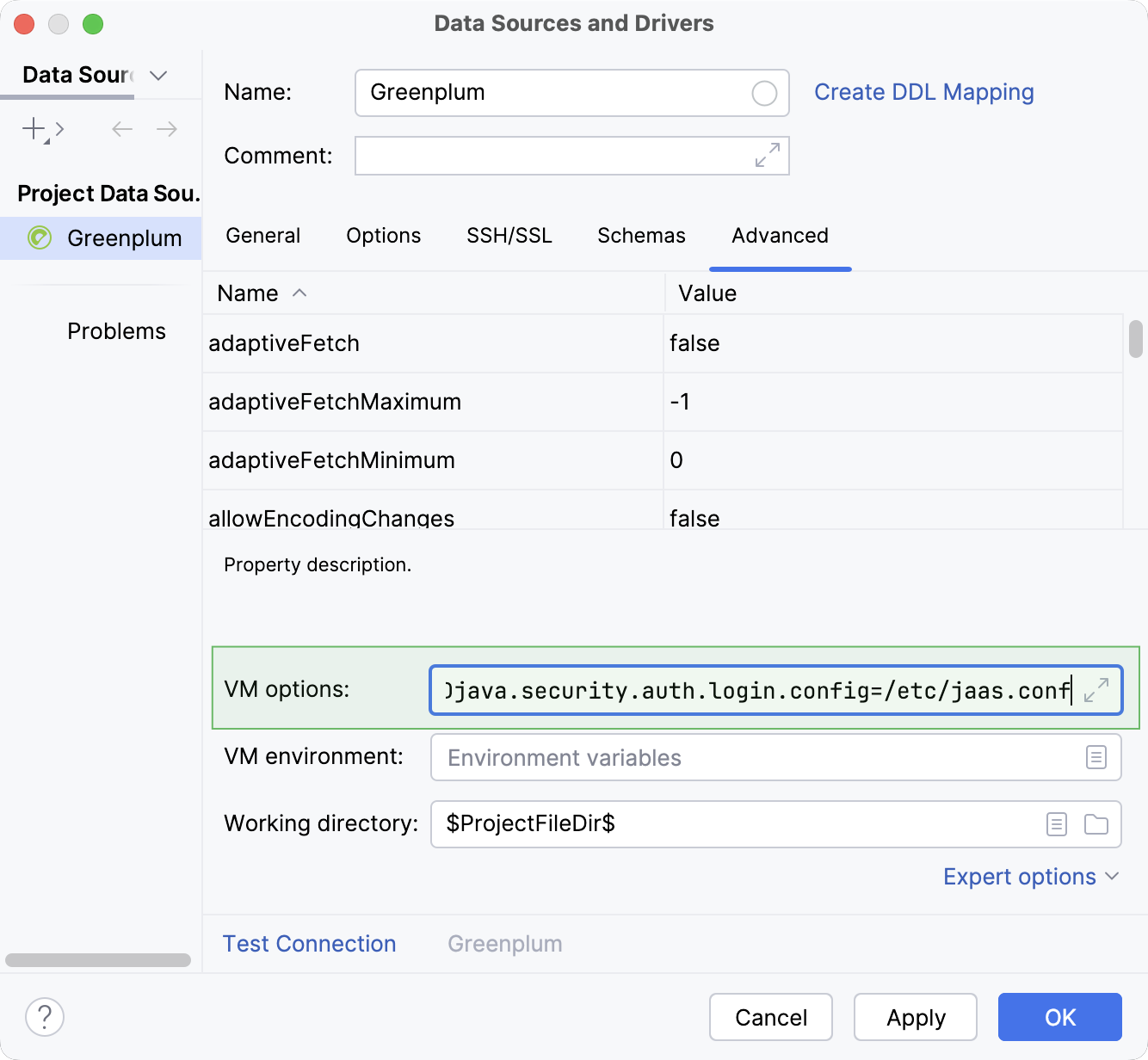Greenplum
Enable the Database Tools and SQL plugin
This functionality relies on the Database Tools and SQL plugin, which is bundled and enabled in DataSpell by default. If the relevant features are not available, make sure that you did not disable the plugin.
Press Ctrl+Alt+S to open settings and then select .
Open the Installed tab, find the Database Tools and SQL plugin, and select the checkbox next to the plugin name.
Official documentation
For full information about Greenplum, refer to the official documentation.
Before you begin
This topic presents a general procedure on how you can create a data source for the connection to your Greenplum database in DataSpell, and run a test connection. It is assumed that you already have the necessary connection details and the database is up and running.
For example, if you want to run a database on your machine and connect to that database, the corresponding DBMS software must be installed on the machine first.
To learn about your DBMS software, refer to its official documentation.
Connect to a Greenplum database
To connect to a database, create a data source that will store your connection details.
Select the data source you want to create. You can do this using one of the following ways:
In the main menu, go to and select Greenplum.
In the Database tool window, click
New on the toolbar. Navigate to Data Source and select Greenplum.

In the General tab of Data Sources and Drivers dialog right pane, specify the driver and connection type.
In the Driver list, leave the default driver option, unless another driver is required for your connection.
From the Connection type list, select the connection type depending on the connection details that you have:
default: connect by using Host, Port, Database, and URL.
URL only: connect by using only the URL.
For the URL only connection type, the JDBC URL that you enter is used and as is, including the database credentials.
For the other connection types, the JDBC URL is broken down into connection details. You can either specify them separately and use the automatically generated URL, or you can enter the URL directly in the corresponding field.

Check if there is a Download missing driver files link at the bottom of the connection settings area. Click this link to download drivers that are required to interact with a database. For a direct download link, refer to the JetBrains JDBC drivers page.

Location for the downloaded JDBC drivers is the DataSpell configuration directory.
You can also use your drivers for the database instead of the provided ones. For more information about connecting to a database with your driver, refer to Add a user driver to an existing connection.
If there is no Download missing driver files link, then you already have the required drivers.
Specify the database connection details. Alternatively, paste the JDBC URL in the URL field.
In the Host field, type your server address.
In the Port field, type the port of Greenplum. The default port is 5432.
From the Authentication dropdown, select the authentication method that you want to use to authenticate the connection. The following options are available:
pgpass: by using the pgpass file. You can store this file in the user's home directory. You can read more about the password file and its location in The Password File at postgresql.org.
User & Password: by using your login and password.
No auth: authentication is not required.
In the User and Password fields, type your user credentials.
To use no password, leave the Password field empty.
To delete a once entered password, right-click the Password field and select Set Empty.

In the Database field, type the database name to which you want to connect.
In the URL field, DataSpell generates the JDBC URL automatically using the values of other connection settings.
If you need to use a JDBC URL with certain additional settings, paste it in the URL field. The general URL to use is as follows:
Format:
jdbc:postgresql://<host_address>:<port_number>/<database_name>Example:
jdbc:postgresql://127.0.0.1:5432/myDatabase

From the Authentication dropdown, select the authentication method that you want to use to authenticate the connection. The following options are available:
pgpass: by using the pgpass file. You can store this file in the user's home directory. You can read more about the password file and its location in The Password File at postgresql.org.
User & Password: by using your login and password.
No auth: authentication is not required.
In the User and Password fields, type your user credentials.
To use no password, leave the Password field empty.
To delete a once entered password, right-click the Password field and select Set Empty.

In the URL field, DataSpell generates the JDBC URL automatically using the values of other connection settings.
If you need to use a JDBC URL with certain additional settings, paste it in the URL field. The general URL to use is as follows:
Format:
jdbc:postgresql://<host_address>:<port_number>/<database_name>Example:
jdbc:postgresql://127.0.0.1:5432/myDatabase

For the reference information about connection settings and properties on the General and other tabs of Data Sources and Drivers dialog ( Shift+Enter) , see Connection settings and DBMS-specific properties.
Ensure that the database connection can be established using the provided details. To do this, click the Test Connection link at the bottom of the connection details section.

If you encounter any connection issues, refer to the Cannot connect to a database page.
(Optional) By default, only the default database and schema are introspected and available to work with. If you also want to work with other databases and schemas, in the Schemas tab, select them for the introspection.

Click OK to create the data source.
Find your new data source in the Database tool window.
For more information about the Database tool window, see the corresponding reference topic.
For more information about working with database objects in DataSpell, refer to Database objects.
To write and run queries, open the default query file by clicking the data source and pressing F4.
To view and edit data of a database object, open Data editor and viewer by double-clicking the object.
Kerberos authentication
Before establishing connection to a Greenplum database with Kerberos authentication, make sure you have the authentication ticket by running Kerberos commands in the command prompt or in the terminal.
If there is a ticket cache file on your machine and
useTicketCacheis set totrue, runklistcommand. Make sure it lists your ticket among the cached ones.If ticket cache is not enabled on your machine, do the following:
Run
klistcommand and make sure it lists your ticket.If your authentication ticket is not on the list, run the
kinitcommand with your username to obtain the ticket from server:kinit <username>. When prompted, enter your password.
For more information about Kerberos tickets, refer to the Kerberos website.
For Windows, before configuring the data source, also check whether your OS has the krb5.ini Kerberos configuration file and proceed with data source configuration accordingly.
To configure your Greenplum data source for Kerberos authentication, perform the following steps:
Create the following
/etc/jaas.confconfig file:pgjdbc { com.sun.security.auth.module.Krb5LoginModule required useTicketCache=true debug=true renewTGT=true doNotPrompt=true; };Open the Data Sources and Drivers dialog ( Shift+Enter) select your data source, and navigate to the Advanced tab.
In the VM Options field, enter the following:
-Djava.security.auth.login.config=/etc/jaas.conf
Click OK to save your changes and close the dialog.
Open the Data Sources and Drivers dialog ( Shift+Enter) select your data source, and navigate to the Advanced tab.
In the properties table, scroll down to the last row and type
gsslibas Name andsspias Value.
Alternatively, on the General tab, add gsslib=sspi to your database JDBC URL in the URL field.
In case of connection issues, do the following:
Enable the debug log by adding
-Dsun.security.krb5.debug=trueto the VM Options field of Advanced tab.Click Test Connection.
Locate the idea.log file and attach it to your support request.
Connection settings and DBMS-specific properties
Connection settings
For the reference information about connection settings (for example, Host, Port, and so on) on the General and other tabs of Data Sources and Drivers dialog ( Shift+Enter) , see Data Sources.
DBMS-specific properties
Schemas tab
Item | Description |
|---|---|
Show internal system schemas | Show internal system schemas like |
Show template databases | Show template databases. |